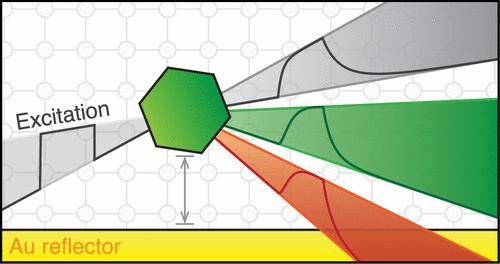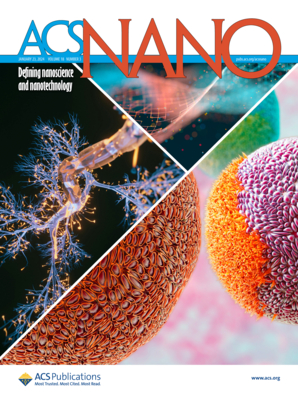Rise and Decay of Photoluminescence in Upconverting Lanthanide-Doped Nanocrystals
IF 15.8
1区 材料科学
Q1 CHEMISTRY, MULTIDISCIPLINARY
引用次数: 0
Abstract
Nanocrystals (NCs) doped with lanthanides are capable of efficient photon upconversion, i.e., absorbing long-wavelength light and emitting shorter-wavelength light. The internal processes that enable upconversion are a complex network of electronic transitions within and energy transfer between dopant centers. In this work, we study the rise and decay dynamics of upconversion emission from β-NaYF4 NCs codoped with Er3+ and Yb3+. The rise dynamics of the red and green upconverted emissions are nonlinear, reflecting the nonlinear nature of upconversion and revealing the mechanisms that populate the emitting states. The excited-state decay dynamics are nonexponential. We unravel the underlying decay pathways using photonic experiments. These reveal the contributions of different upconversion pathways visually, as each pathway exhibits a distinct response to systematic variation of the local density of optical states. Moreover, the effect of the local density of optical states on core-only NCs is qualitatively different from core–shell NCs. This is due to the different balance between feeding and decay of the electronic levels that produce upconverted emission. The understanding of the upconversion dynamics provided here could lead to better imaging and sensing methods relying on upconversion lifetimes or guide the rational optimization of the dopant concentrations for brighter upconversion.

掺杂镧系元素的上转换纳米晶体中光致发光的上升和衰减
掺杂镧系元素的纳米晶体(NC)能够实现高效的光子上转换,即吸收长波长光并发射短波长光。实现上转换的内部过程是掺杂中心内部电子跃迁和掺杂中心之间能量转移的复杂网络。在这项工作中,我们研究了掺杂 Er3+ 和 Yb3+ 的 β-NaYF4 NC 上转换发射的上升和衰减动力学。红色和绿色上转换发射的上升动力学是非线性的,反映了上转换的非线性性质,并揭示了填充发射态的机制。激发态的衰变动力学是非指数的。我们利用光子实验揭示了衰变的基本途径。这些实验直观地揭示了不同上转换途径的贡献,因为每种途径都对光态局部密度的系统变化表现出不同的响应。此外,局部光态密度对纯核数控系统的影响与核壳数控系统有着本质区别。这是由于产生上转换发射的电子水平的馈入和衰减之间的平衡不同。本文所提供的对上转换动力学的理解,可以帮助我们利用上转换寿命开发出更好的成像和传感方法,或指导我们合理优化掺杂浓度,以实现更明亮的上转换。
本文章由计算机程序翻译,如有差异,请以英文原文为准。
求助全文
约1分钟内获得全文
求助全文
来源期刊

ACS Nano
工程技术-材料科学:综合
CiteScore
26.00
自引率
4.10%
发文量
1627
审稿时长
1.7 months
期刊介绍:
ACS Nano, published monthly, serves as an international forum for comprehensive articles on nanoscience and nanotechnology research at the intersections of chemistry, biology, materials science, physics, and engineering. The journal fosters communication among scientists in these communities, facilitating collaboration, new research opportunities, and advancements through discoveries. ACS Nano covers synthesis, assembly, characterization, theory, and simulation of nanostructures, nanobiotechnology, nanofabrication, methods and tools for nanoscience and nanotechnology, and self- and directed-assembly. Alongside original research articles, it offers thorough reviews, perspectives on cutting-edge research, and discussions envisioning the future of nanoscience and nanotechnology.
 求助内容:
求助内容: 应助结果提醒方式:
应助结果提醒方式:


